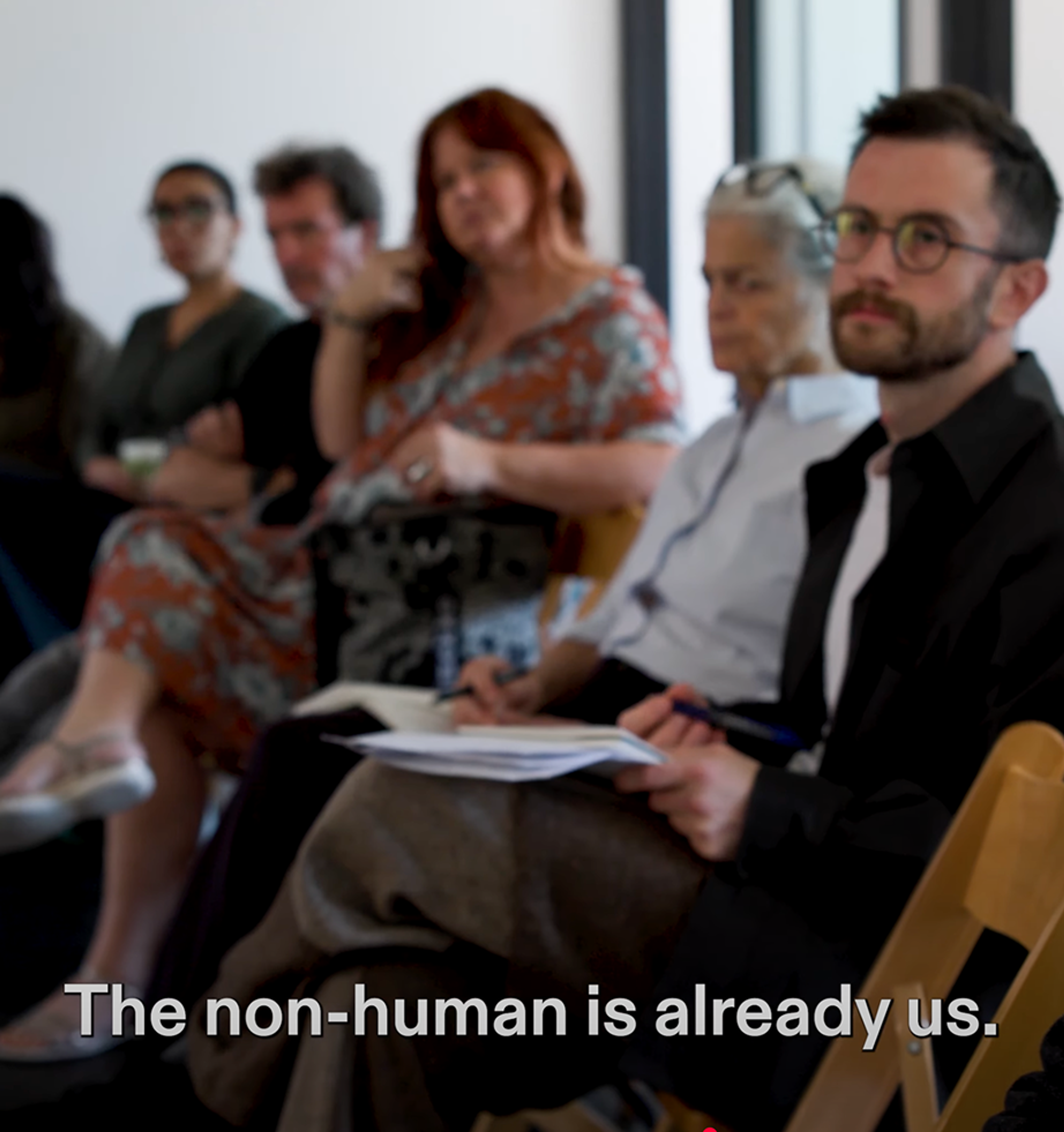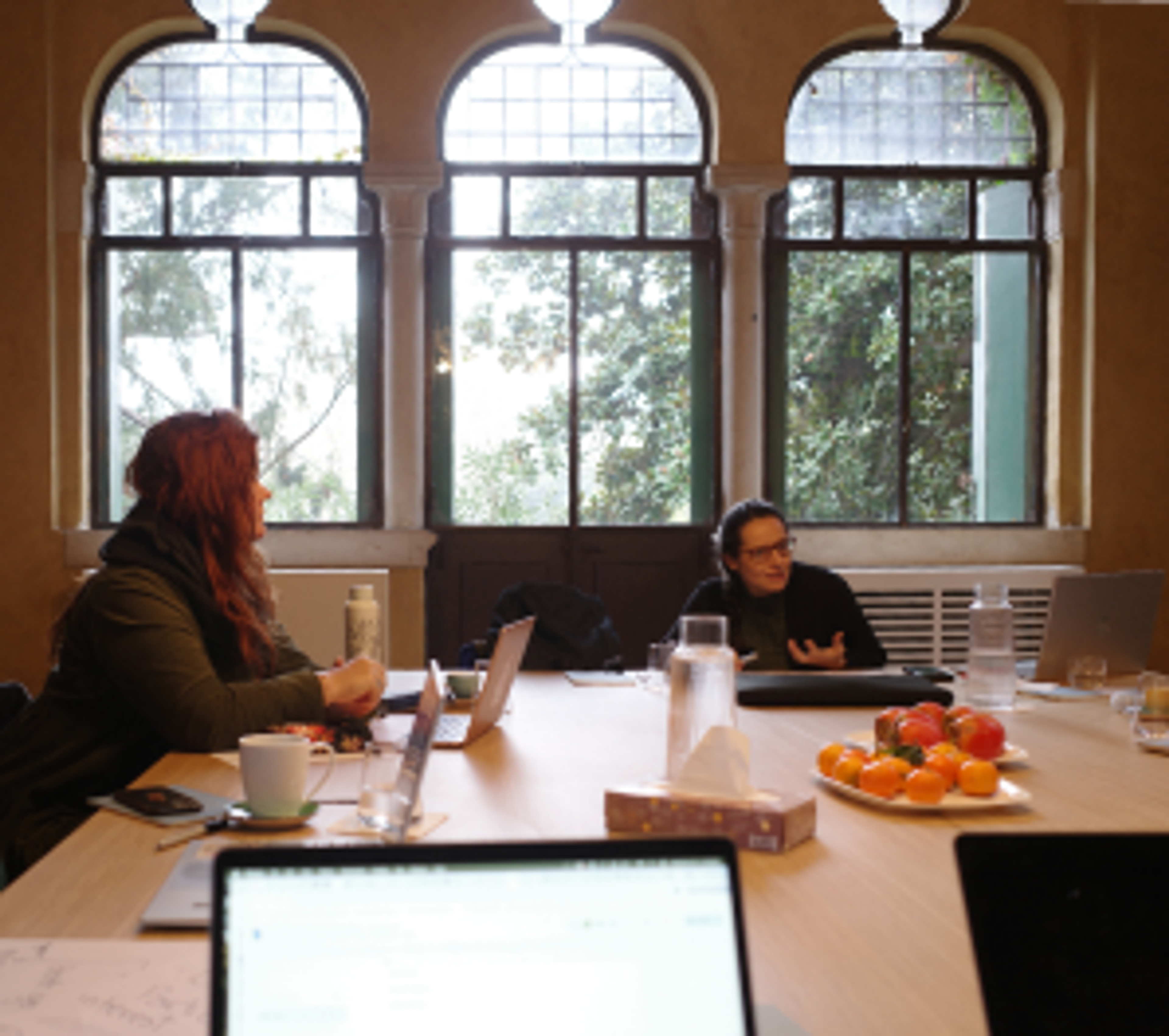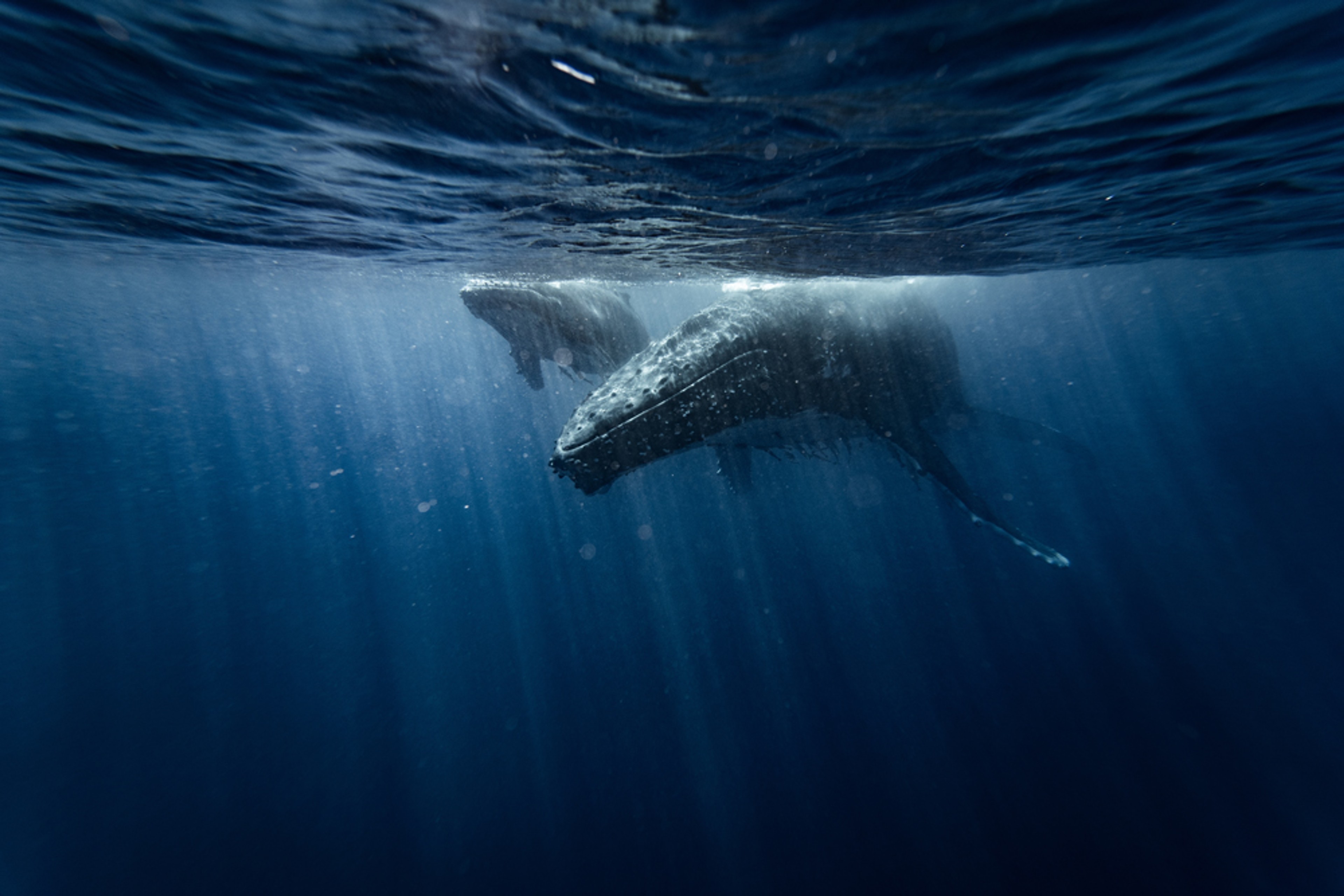Repairing Relationships through Ecological Restoration and Restorative Justice
The Berggruen Institute recently hosted a discussion with Laura J. Martin, a historian and ecologist, Pablo Gómez Pinilla, an environmental and transitional justice lawyer, and members of the Multispecies Constitution Project to explore the intersections of ecological restoration and restorative justice.
***
Jonathan Blake: Ecological restoration and restorative justice might seem to only have the term “restore” in common, but we’ve wanted to talk to you both, and together, on the hunch that these two practices in fact share much more. So, we’re eager to hear your thoughts on the two and to discuss how they do, and where they don’t, fit together.
Laura Martin: Ecological restoration, as I see it, is attempting to co-design nature with nonhuman participants. It’s a practice that requires navigating the tensions between wildness and design, between human and nonhuman agency. It’s a collaboration between humans and an active nature, who are, in a sense, meeting as equals. When it works best, the humans are only making a partial intervention, leaving space for other species to also shape the outcome of the project.
Unlike preservationists, who advocate for non-intervention in ecosystems, restorationists actively intervene—breeding and reintroducing endangered species, removing dams, or culling non-native species. But restorationists also distinguish their work from gardening or the purely economic harvesting of resources, both of which are more total interventions.
Ecological restoration is a growing practice and now includes a wide range of actors, including scientists, volunteer networks, nonprofits, corporations, and increasingly governments. And we now have legal frameworks like UN’s 2022 Kunming-Montreal Global Biodiversity Framework and EU’s 2024 Nature Restoration Law. Yet amidst all the progress, both practically and philosophically, there remains the challenge of navigating between, on the one hand, taking ownership for the stewardship of species or landscapes, and, on the other hand, having humility and leaving space for the active worldmaking of other species.
Humility is such an important value here. We can’t ignore that restoration involves choices of life and death: which species are nurtured, and which are intentionally killed, often in huge numbers, because they are non-native or otherwise “undesired”?
Pablo Gómez Pinilla: As a Colombian environmental lawyer with the Special Jurisdiction for Peace (JEP), my experience with restorative justice and ecological restoration comes from our unique system of sanctions, established by the 2016 peace agreement between the FARC and the Colombian government. This system applies to defendants most responsible for serious crimes during the armed conflict who provide full truth and acknowledge their actions. They then access special restorative sanctions, which include a restorative element, where defendants perform reparative activities, and a retributive element, where defendants are subject to restrictions on their freedoms and rights, like residence and movement, instead of traditional imprisonment.
The goal of restorative justice to create tangible solutions that satisfy victims’ rights, provide meaningful reparative work, reintegrate ex-combatants, and reconstruct social ties. And remember, unlike most restorative justice, we aren’t dealing with small offenses. At the JEP, we’re dealing with crimes against humanity, war crimes, and genocide.
Let me give an example. We had a project with forty-five defendants who, as part of their restorative sanction, undertook ecological restoration in an area south of Bogotá affected by the invasive gorse plant (retamo espinoso in Spanish). They worked in the mountains where they had previously committed and/or suffered violence to remove the non-native species and restore the land. Most of the restorative justice work we do doesn’t involved ecological restoration, but this case has been important for us. And for me, it raises the possibility of approaching ecological restoration as a restorative sanction for more than just war and war crimes. What might it offer as a sanction for the crimes of climate change that humans have committed against the atmosphere, the oceans, creatures, and fellow humans?
Laura Martin: Pablo’s points highlight three intersections between our areas of work. First is the question of social ties. I agree the crimes against humanity committed during Colombian conflict require the reconstruction of social ties between human beings. And most ecological restorations projects aim to restore nonhuman-nonhuman ties. But I’m really interested in the potential, which Pablo mentioned at the end, of using ecological restoration work to mend human-nonhuman relationships. How can we advance that?
Second is the idea of irreparability. When do ecologists deem environmental harm reparable versus irreparable? What political opportunities does this distinction create or close?
And I’m eager to hear more, thirdly, about the possibilities and perils of ecological restoration as a form of sanction. It’s intriguing and I could see it be quite powerful, but I’m cautious. Early restoration work in the US, for example, was done by prisoners. And once ecological restoration is tied to the incarceration system, it looks quite bleak—just another form of exploited labor doing the work that ideally should be a global responsibility with universal public participation.
Pablo Gómez Pinilla: These are difficult questions, Laura, and I don’t have definitive answers.
Regarding social ties affected by war, there’s the link between the conflict’s damage and the defendants’ specific project. And yes, as our partners at Fundación Natura warned us, if ecological restoration is seen as punishment, no one will want to join voluntary restoration efforts. We of course understand this. Yet, at the JEP, we must create and offer a retributive sense of justice for victims. Victims can’t look at the restoration work and think, “Oh, they are having fun.” It’s a very difficult balance. Ultimately, we try to frame these projects as collective healing, where victims and offenders collaborate and cooperate to bring about reconciliation and healing in society and in the land.
The ecologists and biologists at Fundación Natura also warned us that ecological restoration takes a long time—15 to 20 years for visible results—which challenges public expectations of immediate results from the justice process. But this provides yet another opportunity for collective healing since it pushes us to move beyond the simple formula of “damage plus repair equals everything is back to being fine.” No, it’s not just about repairing damage but fostering acceptance of what cannot be fully repaired.
Jonathan Blake: We often assume that good things, like ecological restoration and restorative justice, go together—that they move towards a unified goal. But to what extent do you see tensions between these arenas?
Laura Martin: There’s immense potential for restoration ecologists to learn from restorative justice practitioners. Ecological restorationists, in essence, pursue collective healing but often without recognizing it as such. Many past projects have sought to undo the ecological impacts of injustices that are fundamentally human—repairing the damage to ecosystems caused by war, for instance. This presents both a failure and an opportunity: restoration can and should be approached more capaciously as a mode of restorative justice. My struggle in multispecies work is bringing humans and nonhumans into shared ethical or legal frameworks without diminishing the rights of already marginalized human communities.
María Paula Saffon Sanin: I appreciate the recognition of multidimensionality in both your perspectives. The JEP, for instance, nests individual responsibilities and harms within broader frameworks of restoration that transcend individual acts. This approach is vital, though challenging when one is accountable to victims, as Pablo knows. Articulating individual, collective, and structural dimensions is essential.
We can have both localized ecological restoration projects—in fact, we can have them in many places at the same time—and institutions or work operating at the systemic scale, at the planetary scale. Addressing all these scales—in space but also in time—has to be the way forward.
Laura Martin: Consider on-site mitigation, which is akin to addressing individual harm. Let’s say that a parking lot gets built on top of a wetland. Then the store that paved the area compensates for the damage by building a new wetland elsewhere on the property. Here you have the entity that is responsible for the harm doing the work to restore the ecological community at the very site of that harm.
Contrast this with off-site mitigation, like forestry-based carbon offsetting, which is a totally different model. This global approach compensates for system-wide harm or crimes, such as fossil fuel emissions, often disconnected from any specific damage site. It’s about trying to reduce global CO2 levels, which is obviously crucial, but it’s not true compensation or repair for localized harm to ecosystems.
Mihnea Tanasescu: I’m struck by unaddressed questions about baselines: what state of health or healing or wholeness are we aiming for? This is deeply tied to reparability, discussed earlier by Pablo.
One approach would take us to examining relationships and relationality. What is the baseline of a “good relationship” between humans and between humans and nonhumans, both? Christine Winter has taught us to think in terms of defining “right relationships” rather than just naming and punishing specific crimes—focusing on achieving reciprocal relationships where people treat themselves, others, and their surroundings appropriately.
Laura, your point on on-site and off-site mitigation relates to this. Both forms assume commensurability—an equivalence between damage and restoration. But ecologists know this isn’t true: a wetland isn’t equivalent to a park; planting trees isn’t equivalent to the carbon footprint of me flying to Los Angeles. If we abandon this illusion of commensurability, restoration becomes centered on relationships, reciprocity, and interconnectedness, not false equivalencies.
Laura Martin: I see great promise in shifting focus to restoring relationships, rather than repairing specific places or ecosystems. This has significant potential for ecological and legal thinking. Because, you’re right, there are inherent problems in thinking about baselines that we must return to. There’s been an obsession, especially in the 1980s and ‘90s, with returning ecosystems to a particular point in time, for instance to 1492 in the context of the Americas.
For me, the really exciting restoration projects are those that take the more expansive, relationship-oriented perspective. In Minnesota, for instance, local tribes are driving projects to restore wild rice and sturgeon. Wild rice plants and baby fish are being reintroduced to the environment, but the real purpose is to restore relationships between tribal members and those species, which are historically and culturally so important. There’s a lot of opportunity for more thinking along these lines: about ecological restoration as the restoration of relationships. This parallels how restorative justice scholars think about the work of mending interpersonal relationships.
To return to the assumptions about commensurability or fungibility between habitats, which is so central to ecological restoration as generally practiced, it makes you ask: can one ecosystem truly replace another? Is like for like compensation possible? Focusing on relationships moves us away from the trap of imagining that we can replace one ecosystem with a different ecosystem halfway around the world. Restoration, to be truly transformative, must be about fostering connections, not abstractly compensating for damage.
Pablo Gómez Pinilla: This is the same for restorative justice work: ideally, restoration occurs where the crime was committed with offender and victim present. Unfortunately, this is often unfeasible due to migration and changes to the landscape, both of which result from the war itself. This presents the problem of representation—what can stand in for what?—in both restorative justice and ecological restoration.
Laura Martin: Exactly. Who can receive the justice that’s been produced? How do we know if justice, for people or for ecosystems, has been achieved? This is especially tricky with species whose lifespans far exceed ours.
Pablo Gómez Pinilla: We face the problem of timelines and lifespans in our work in Colombia. International criminal law generally is obsessed with identifying the “most responsible person,” the real “bad guy” behind the crimes. But when we find him, it’s often an older person without the physical strength needed for ecological restoration. This is an obvious limit to ecological restoration as a restorative justice practice.
And the restorative justice we have done so far, to be honest, also has limits as an ecological restoration practice. Given the magnitude of the ecological damage, the forty-five offenders involved in the project are clearly insufficient. Our project’s impact on the environment is very small.
That said, having ex-combatants use their time and their bodies to restore this area was socially very meaningful and very exciting in terms of restorative justice. When we started, we thought it would be impossible to bring together victims of crimes against humanity with the perpetrators of those crimes and to have them work as a team to restore the environment around their communities. Yet by the end of the project, there was a real human connection between them. Victims and offenders recognized the humanity in one another.
It’s exactly as was said before: the power of restoration, whether of societies after violence or of ecosystems after destruction, lies it its potential to create and recreate relationships.
***
Pablo Gómez Pinilla is a Colombian lawyer specializing in environmental law, transitional justice, and socio-legal studies. He holds an MA in Political and Social Studies from the National Autonomous University of Mexico. Pablo currently works at the Peace Tribunal of the Special Jurisdiction for Peace. He participated in a personal capacity and the views expressed do not express the official position of the Special Jurisdiction for Peace.
Laura J. Martin is a historian and ecologist who studies how people shape the habitats of other species. She is the author of Wild by Design: The Rise of Ecological Restoration and numerous articles on just solutions to the global biodiversity crisis. Her research and commentary have been featured in media outlets such as the New York Times, The Washington Post, TIME, The Atlantic, and The Los Angeles Times. She is an environmental studies professor at Williams College and a former fellow of the Harvard University Center for the Environment, the Stanford Humanities Center, and the American Council of Learned Societies. She is working on a book about how synthetic herbicides have reshaped life on Earth.


